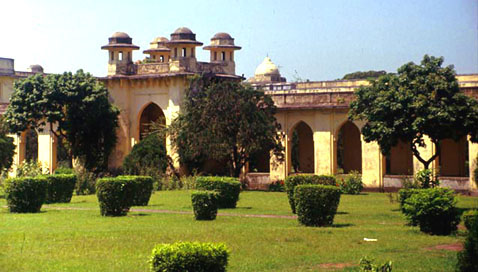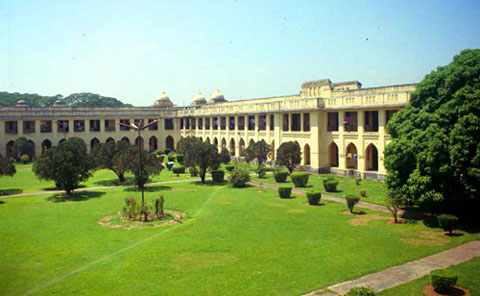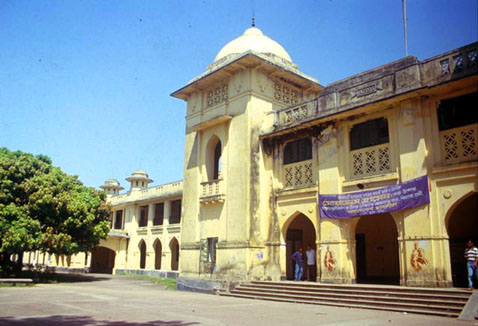Salimullah Muslim Hall
85 Years of History
Muslim population of British India, especially those who lived in the Eastern part of Bengal, were greatly deprived of the advantage of the facilities given by British Government during the Nineteenth and early twentieth century. With the Partition of Bengal in 1905 these Muslims became happy in anticipation that greatly-deprived eastern part of Bengal will get their share of development, but their dream was shattered after the prorogation of Partition of Bengal in 1907. |
To pacify these frustration, the ‘Nathan Committee' was constituted by the British Government. The committee recommended to establish a tertiary level educational institution for the people of the East Bengal in 1912. Considering the report submitted by Mr. Nathan, Calcutta University Commission took decision of establishing a residential hall based university and after much dispute, Mr. PG Hartog, took over the charge of Vice Chancellor of the University of Dhaka on 10 Dec 1920. Enrollment of students started from 10 July 1921.
In the beginning, the journey of Dhaka University started with only three halls. These are Salimullah Muslim Hall, Jagannath Hall & Dhaka Hall.
In 1921-22 session, Salimullah Muslim hall started functioning with 75 residential students (according to another opinion 87) and 103 non residential students on the first floor of Dhaka Medical College.
Ahmed Fazlur Rahman, Reader of History Department (Associate Professor), Ex-Faculty of Aligarh Muslim University (alma mater from Oxford University) was appointed as Provost of Salimullah Muslim Hall. The present building of Salimullah Hall was inaugurated on 11 August 1931. |
The hall is established on a 12.91 acres of land including 75 thousand sq. ft. of garden. The main structure is a rectangular structure, resembling a fort, but without typical fortification. This two-storied building house 810 students. It has one dining room, one library, one auditorium with TV facility, one computer room, two reading rooms and one saloon.
Salimullah Muslim Hall has also its involvement in the Liberation War of Bangladesh in 1971 too. It came to news headlines many a times after that. The Pakistani soldiers also attacked Salimullah Hall and Dhaka Hall. They beat up Salimullah Hall house tutor Professor Munim.
After the Liberation of Bangladesh, the then Government deleted the word ‘Muslim' from its name to make it non-communal flavour in a resolution taken by the Syndicate of University of Dhaka in its meeting dated June 17, 1972 renaming of “Salimullah Muslim Hall” as “Salimullah Hall”, and the consequent changes made in the Dhaka University Order 1973.
A Writ Petition was filed by Raquibuddin Ahmed, a former resident of Salimullah Hall, who is also the first Secretary General of Salimullah Hall Alumni Association requesting the High Court about this changing of the name of this Hall. The High Court on June 12, 2004, issued a rule upon the Vice Chancellor and the Registrar of Dhaka University and Provost of Fazlul Huq Hall to show cause as to why the Syndicate's decision of deleting the word 'Muslim' from the name of the hall should not be declared illegal. The HC declared 1972 decision of the University Syndicate illegal and the rule absolute. The Hon'ble Court directed the authority to give SM Hall its original name “Salimullah Muslim Hall”.
Salimullah Muslim Hall is not only an ordinary residential hall for the students of Dhaka University but it embodies also our history and proud heritage, the heritage of our own identity along with ours being backward not only in education but also in almost all civic matters. One may recall here the facts and sad experience the people of this region had in the creation in 1905 and then in the annulment of the new province of East Bengal and Assam in December 1911, and the 'compensatory' measure that followed the establishment of Dhaka University in 1920. The dynamic political and social roles played by Dhaka's Nawab Salimullah during this turmoiling period in the beginning of the 20th century was embodied in the arena and structure of the Salimullah Muslim Hall. No doubt, he died immaturely in 1915 at the middle of his youth when he was moving up and down for seeking well-being of the down-trodden people of this region and for emancipation of the disadvantaged classes and so also of the Muslims of East Bengal and Assam, the establishment of the Dhaka University and of the Salimullah Hall, in particular, was made symbolic of his endless sacrifice and contributions.
Source: © Copyright, All right reserved, Triune Group
|
|
|
|


